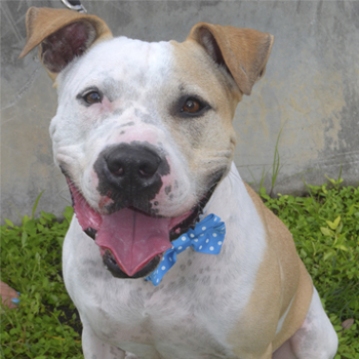
Imagine you’re a kid again.
You look forward to visiting the playground. Nearly every time, the neighborhood bully taunts you with loud, harsh words and threats of physical abuse. Your reactive choices are to give warning, fight back, or avoid the playground alltogether.
Just because we raise our voice (on occasion) doesn’t mean we are verbally abusive. Did you ever respond to an inconsiderate driver by yelling, cursing or sharing a hand signal? Your reaction was only motivated by fear of being hurt or worse. Instead, you get labeled as a bad person, loose cannon and very possibly a criminal. Seems a little overboard, doesn’t it?!
Human beings have a huge variety of ways to express fear and anger. We can avoid situations, fight back, yell, slam doors, plot revenge, take to the internet, etc. Dogs have very limited resources. They bark, growl, whine, or howl for verbal communication.
Puppies and dogs may growl when they play, as a way of psyching out the dog at the end of the tug rope. A growl is usually a dog’s warning, a way to avoid conflict or retreat from discomfort. Respectfully hear the dog’s message, “This is making me uncomfortable/ nervous/afraid”. He may bare his teeth, as if to say, “Don’t make me use these”. Heed the warning. Stay calm, you may get bitten if you shout or get physical.
A case in point
Last year, I agreed to take in a small dog and find the right home for him. As I am a dog-magnet, he oddly lunged at me. Who could blame him? He watched his owner sadly pack all his things, now I was taking him from the only family he had ever known. The surrender was tearful; but we all knew we were doing what was best for the dog.
Arriving home with the little dickens, my pack was like, “Here we go again”. I kept him on his harness and four foot lead. He was crated when I was away and at night. I quickly learned, he is somewhat of a dog-outcast. He had been taken from his canine-mom prior to the recommended 8-12 weeks, to “bond with his new human f a m i l y ” . N o t o n l y i s t h i s a n anthropomorphic fallacy - it is a huge disservice to the dog. It robs them of the opportunity to learn proper social skills, interact, and ultimately, how to be a dog (from litter mates). His humans never allowed him to socialize with other dogs, because they were afraid he would get hurt. He doesn’t get along with most other dogs. NOT because he is mean - he is fearful. He is very vocal, and growls. I took note of behavioral patterns. He is tolerant of most female dogs, regardless of size. After he has lunch (dogs’ main meal here), if my big fella even breathes in his direction, a barkfest may ensue. If he gets in a small space (bathroom), he gets very nervous if another dog approaches. I am vigilant and set him up for success. We went on numerous failed meet and greets. It didn’t look like this little nugget was going anywhere. Continuing with extreme amounts of patience and understanding, he is learning that he doesn’t have to be afraid; he is safe… and he is home, with me, forever. Growl and all.
Adopt, DO NOT Shop!
